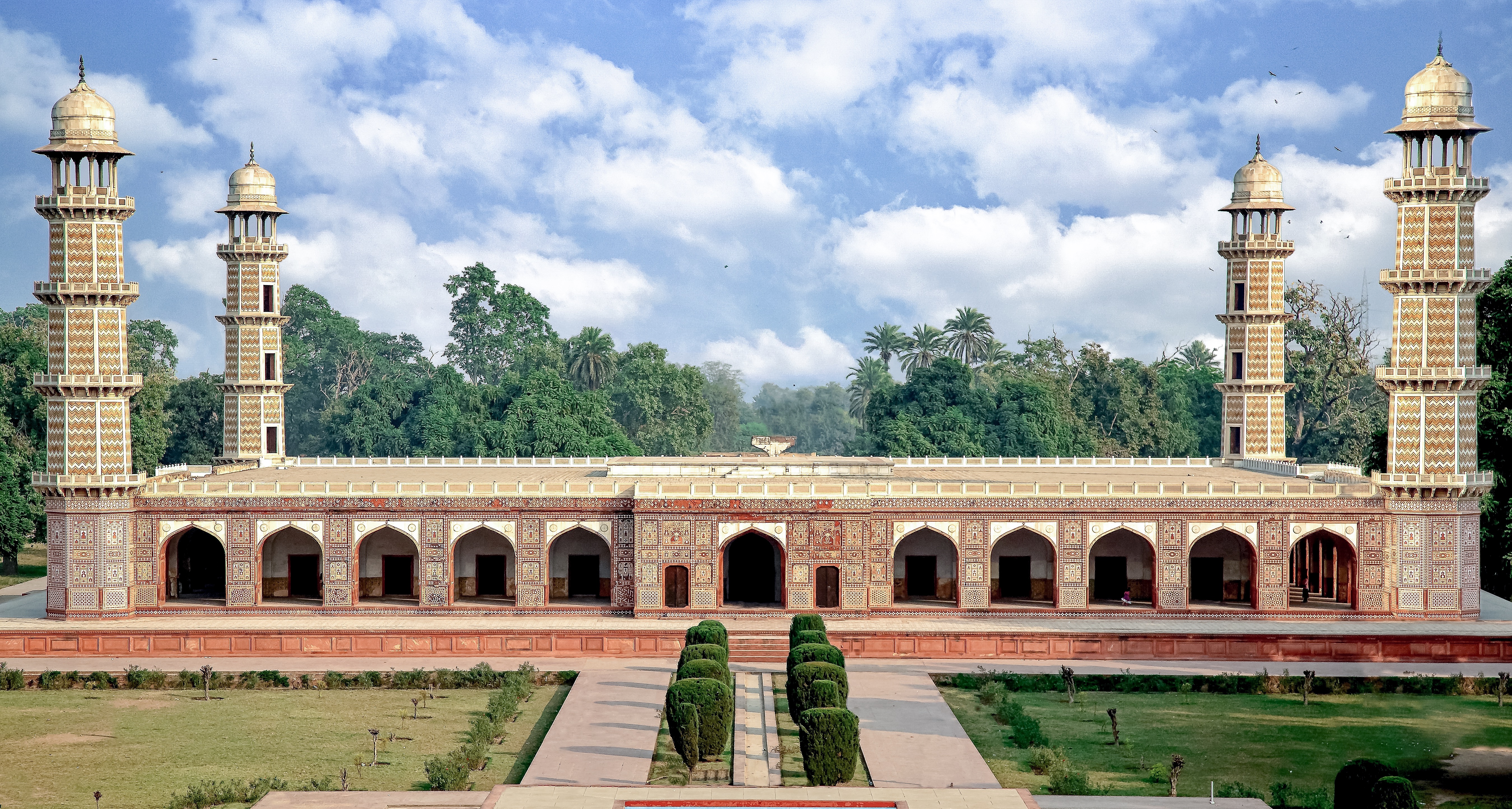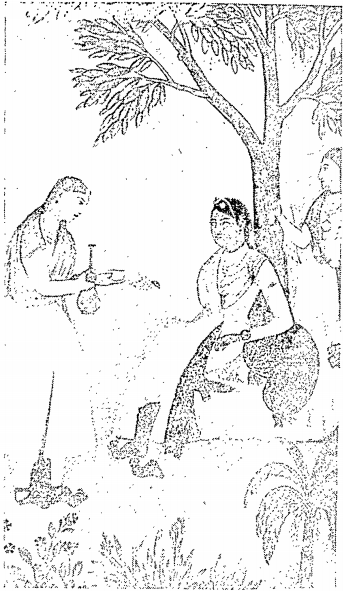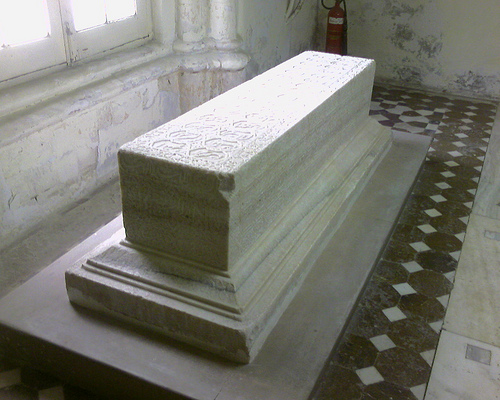|
Emperor Jahangir
Nur-ud-Din Muhammad Salim (30 August 1569 – 28 October 1627), known by his imperial name Jahangir (; ), was the fourth Mughal Emperor, who ruled from 1605 until he died in 1627. He was named after the Indian Sufi saint, Salim Chishti. Early life Prince Salim was the third son born to Akbar and his favourite Queen Consort, Mariam-uz-Zamani in Fatehpur Sikri on 30 August 1569. He had two elder brothers, Hassan Mirza and Hussain Mirza, born as twins to his parents in 1564, both of whom died in infancy. Since these children had died in infancy, Akbar sought the blessing of holy men for an heir-apparent to his empire. When Akbar was informed of the news that his chief Hindu wife was expecting a child, an order was passed for the establishment of a royal palace in Sikri near the lodgings of Shaikh Salim Chisti, where the Empress could enjoy the repose being in the vicinity of the revered saint. Mariam was shifted to the palace established there and during her pregnancy, Akbar ... [...More Info...] [...Related Items...] OR: [Wikipedia] [Google] [Baidu] |
Tomb Of Jahangir
The Tomb of Jahangir ( ur, ) is a 17th-century mausoleum built for the Mughal Emperor Jahangir. The mausoleum dates from 1637, and is located in Shahdara Bagh near city of Lahore, Pakistan, along the banks of the Ravi River. The site is famous for its interiors that are extensively embellished with frescoes and marble, and its exterior that is richly decorated with ''pietra dura''. The tomb, along with the adjacent Akbari Sarai and the Tomb of Asif Khan, are part of an ensemble currently on the tentative list for UNESCO World Heritage status. Location The tomb is located in Shahdara Bagh, northwest of the Walled City of Lahore. The tomb is located across the River Ravi from Lahore, in what was a rural area known for its numerous pleasure gardens. The tomb is located in Jahangir's pleasure garden, the ''Dilkusha'' Garden, which had been laid out in 1557. The Tomb of Asif Khan, built-in 1645, and the Akbari Sarai, built-in 1637, are located immediately west of Jahangir's tomb co ... [...More Info...] [...Related Items...] OR: [Wikipedia] [Google] [Baidu] |
Padshah
Padishah ( fa, پادشاه; ; from Persian language, Persian: [or Old Persian: *], 'master', and ''shāh'', 'king'), sometimes Romanization of Persian, romanised as padeshah or padshah ( fa, پادشاه; ota, پادشاه, pādişah; tr, padişah, ; ur, , hi, बादशाह, baadashaah), is a superlative sovereign title of Persian origin. A form of the word is known already from Middle Persian, or Pahlavi language, as ''pātaxšā(h)'' or ''pādixšā(y)''. Middle Persian ''pād'' may stem from Avestan ''paiti'', and is akin to Pati (title). ''Xšāy'', "to rule", and ''xšāyaθiya,'' "king", are from Old Persian. It was adopted by several monarchy, monarchs claiming the highest rank, roughly equivalent to the ancient Persian notion of "Great King", and later adopted by post-Achaemenid and the Mughal emperors of India. However, in some periods it was used more generally for autonomous Muslim rulers, as in the ''Hudud al-'Alam'' of the 10th century, where even some p ... [...More Info...] [...Related Items...] OR: [Wikipedia] [Google] [Baidu] |
Jagat Gosain
Manavati Bai, also spelled Manvati Bai, (13 May 1573 – 8 April 1619), better known by her title, Jagat Gosain (), was the second wife and the empress consort of the fourth Mughal emperor Jahangir and the mother of his successor, Shah Jahan. She is also known as Mani Bai, Manmati, Jodh Bai (), Findly, p. 396 Taj Bibi () and was also given the posthumous title of Bilqis Makani (). She was also wrongly referred to as Balmati Begum by Manrique. She should not be confused with her mother-in-law, Mariam-uz-Zamani, who was erroneously called as "Jodha Bai" by European historians since any daughter belonging to the Jodhpur region could be called Jodha Bai or daughter of Jodhpur region. By birth, she was a Rajput princess of Marwar (present-day Jodhpur) and was the daughter of Raja Udai Singh (popularly known as ''Mota Raja''), the Rathore ruler of Marwar and the full-sister of Sawai Raja Sur Singh, another Rathore ruler of Marwar and Maharaja Kishan Singh, founder of Kishangarh ... [...More Info...] [...Related Items...] OR: [Wikipedia] [Google] [Baidu] |
Luzzat-un-Nissa Begum
Luzzat-un-Nissa Begum () (23 September 1597 – ) was a Mughal princess, the youngest daughter of Emperor Jahangir and his Rathore wife, Jagat Gosain. She was also the full sister of Emperor Shah Jahan. Life Born on 23 September 1597, Luzzat was the youngest daughter of Prince Salim (later Jahangir), the eldest surviving son of Mughal Emperor Akbar. Her mother was the Rathore princess, Jagat Gosain (''Bilqis Makani'' in official chronicles), the tenth daughter of Udai Singh Rathore, the Raja of Marwar. She was born at Kashmir on the return journey of the Royal entourage of her grandfather, Akbar, towards Lahore. She had two older full-siblings, Begum Sultan, who died infancy and Prince Khurram Shihab-ud-Din Muhammad Khurram (5 January 1592 – 22 January 1666), better known by his regnal name Shah Jahan I (; ), was the fifth emperor of the Mughal Empire, reigning from January 1628 until July 1658. Under his emperorship, the Mugha ..., who succeeded their father to ... [...More Info...] [...Related Items...] OR: [Wikipedia] [Google] [Baidu] |
Bahar Banu Begum
Bahar Banu Begum ( fa, بهار بانو بیگم; 9 October 1590 - 8 September 1653), meaning "The Blooming Lady", was a Mughal princess, the daughter of Mughal emperor Jahangir. Birth Bahar Banu Begum was born on 9 October 1590, during the reign of her grandfather Emperor Akbar. Her mother was Karamsi, the daughter of Raja Keshav Das of the Rathore family. On the same day, Jagat Gosain, the daughter of Udai Singh of Marwar, gave birth to another daughter named Begum Sultan Begum. She was the seventh child and fifth daughter born to her father, but the only child of her mother. Marriage In 1625, Prince Tahmuras Mirza, the eldest son of Prince Daniyal Mirza, and the grandson of Akbar, paid homage at the court. Prior to this his younger brother Prince Hushang Mirza also attained the honour of paying homage. In order to honour them, Jahangir married Bahar Banu to Tahmuras, and Hoshmand Banu Begum, the daughter of Prince Khusrau Mirza, to Hoshang. After the death of her father Jah ... [...More Info...] [...Related Items...] OR: [Wikipedia] [Google] [Baidu] |
Parviz Mirza
Parviz Mirza (31 October 1589 – 28 October 1626) was the second son of Mughal emperor Jahangir from his wife, Sahib Jamal. His daughter, Nadira Banu Begum, later became the wife of Dara Shikoh. Early life Born on 31 October 1589, Parviz was the son of Jahangir and Zayn Khan Koka's cousin, Sahib Jamal. Zayn Khan koka, was the son of one of Akbar's Amahs. As the Emperor's second son, he was 2 years older than Khurram, and 2 years younger than Khussrau. In peaceful times, before his brother's rebellion, he was active and enjoyed polo. Polo was a popular sport among the Mughal court, evidenced by a miniature showing the typical 4 player team consisting of Jahangir, Parviz, Khurram, and Asaf Khan. He supported his father's war of succession. Following the failed revolt, and the death of Jahangir's grandmother Miriam Makani, Parviz accompanied his father back to Agra in 1604. This was in attempt to reconcile with Akbar, and his father was severely reprimanded for his treason ... [...More Info...] [...Related Items...] OR: [Wikipedia] [Google] [Baidu] |
Khusrau Mirza
Khusrau Mirza (16 August 1587 – 26 January 1622) was the eldest son of the Mughal Emperor Jahangir and his first wife, Shah Begum. He was beloved of his grandfather, Mughal Emperor Akbar and his grandmother, Mariam-uz-Zamani. The young prince displayed exceptional skills and wisdom and had the privilege to be groomed by the Mughal Emperor Akbar himself for the throne of the Mughal Empire. He turned out to be the most capable and qualified son of Jahangir but was befallen by an unfortunate destiny. Being Jahangir's eldest son, he was the heir-apparent to his father but Jahangir favoured his son Khurram Mirza for the animosity he held for Khusrau. The charismatic prince was beloved of the common people widely known for his valour, secularism and battlefield talent, and was free of all vices of the people of his age. It is noted that Akbar use to see himself in Khusrau, as a very brave, capable, talented battlefield commander and charismatic person. Khusrau Mirza had powerf ... [...More Info...] [...Related Items...] OR: [Wikipedia] [Google] [Baidu] |
Sultan-un-Nissa Begum
Sultan-un-Nissa Begum (25 April 1586 – 5 September 1646) was a Mughal princess, the eldest child and first daughter of Mughal Emperor Jahangir from his first wife, Shah Begum. Life Sultan-un-Nissa, also known as Nithar Begum, was born on 25 April 1586, Kashmir during the reign of her grandfather, Akbar on the intended return journey of the Imperial household towards Fatehpur Sikri. Her father was the eldest surviving son of Akbar, Prince Salim and her mother was Shah Begum, popularly known as Man Bai, the daughter of Bhagwant Das, the Raja of Amer. On the occasion of her birth, the Emperor assembled a great feast at the house of the Queen Mother, Mariam Makani where large amount of gifts were exchanged. Her only full sibling was the ill-fated Khusrau Mirza who was killed on the orders of her younger half-brother, Prince Khurram Shihab-ud-Din Muhammad Khurram (5 January 1592 – 22 January 1666), better known by his regnal name Shah Jahan I (; ), was the fifth emper ... [...More Info...] [...Related Items...] OR: [Wikipedia] [Google] [Baidu] |
Marriages
Marriage, also called matrimony or wedlock, is a culturally and often legally recognized union between people called spouses. It establishes rights and obligations between them, as well as between them and their children, and between them and their in-laws. It is considered a cultural universal, but the definition of marriage varies between cultures and religions, and over time. Typically, it is an institution in which interpersonal relationships, usually sexual, are acknowledged or sanctioned. In some cultures, marriage is recommended or considered to be compulsory before pursuing any sexual activity. A marriage ceremony is called a wedding. Individuals may marry for several reasons, including legal, social, libidinal, emotional, financial, spiritual, and religious purposes. Whom they marry may be influenced by gender, socially determined rules of incest, prescriptive marriage rules, parental choice, and individual desire. In some areas of the world, arranged ... [...More Info...] [...Related Items...] OR: [Wikipedia] [Google] [Baidu] |
Nur-un-Nissa Begum (wife Of Jahangir)
Nur-un-Nissa Begum ( fa, نورالنساء بیگم; born 1570) meaning 'Light among Women', was a Timurid princess, the daughter of Ibrahim Husain Mirza and the wife of fourth Mughal emperor Jahangir. Early life Born a Timurid princess, Nur-un-Nissa Begum was the daughter of Prince Ibrahim Husain Mirza, a descendant of Prince Umar Shaikh Mirza, second son of Amir Timur. Her mother was Princess Gulrukh Begum, the daughter of Prince Kamran Mirza, son of the first Mughal emperor Babur, and brother of the next emperor Humayun. She had a brother named Prince Muzaffar Husain Mirza, married to Akbar's eldest daughter Khanum Sultan Begum. In 1572, Gulrukh Begum lost contact with her husband Ibrahim Husain Mirza as he was forced to vacate Gujarat by Akbar. She fled to the Deccan with her children. Ibrahim Husain Mirza, who ultimately fled towards Multan, was captured by the royal officers. In 1573, he died while still in prison. On their way to Deccan, the ruler of Khandesh attempted ... [...More Info...] [...Related Items...] OR: [Wikipedia] [Google] [Baidu] |
Malika Jahan
Malika Jahan ( fa, ملکہ جھان; meaning "Queen of the World") was a Jaisalmer princess, and wife of Mughal emperor Jahangir. Family Malika Jahan, whose Rajput name is unknown, was born a Jaisalmer princess, the daughter of Rawal Bhim Singh, the ruler of Jaisalmer, and a contemporary of Emperor Akbar, and in imperial service to him. He had been a man of rank and influence. She was the granddaughter of Rawal Harraj. She had three paternal uncles named Kalyan Mal, Bhakar and Sultan. Her aunt was married to Emperor Akbar in 1570, and was a mother of a daughter named Mahi Begum. Rawal Bhim succeeded his father Harraj in 1578. After Bhim's death in 1616, he left a son named Nathu Singh, two months old, who was killed by the Bhatis. His younger brother Kalyan Mal succeeded him as Rawal. Marriage Jahangir married her while he was a prince, and gave her the title 'Malika Jahan', which literally means ("Queen of the world"). Jahangir notes in his memoirs that this alliance was ... [...More Info...] [...Related Items...] OR: [Wikipedia] [Google] [Baidu] |
Sahib Jamal
Sahib Jamal ( fa, صاحب جمال; died 25 June 1599) was the wife of Prince Salim, the future Mughal emperor Jahangir and the mother of his second son, Prince Parviz. Family Sahib Jamal was of Turkish origin and was the daughter of a respected Muslim religious personality, Khwaja Hasan of Herat, making her the cousin of Zain Khan Koka, who was a leading official in the Mugal Empire under Akbar, including serving for a time as governor of Kabul. Her father, Khwaja Hasan, was known widely for his scholarship and studies in the techniques of warfare. Akbar held him in high esteem, and often discussed with him the spiritual problems that often agitated his mind. Zain Khan's daughter, Khas Mahal was also married to Jahangir. Sahib Jamal was a beautiful, highly cultured and well educated woman, who was fully conversant with the rules and etiquettes of the palace. Marriage Salim married her on 1586. Upon her marriage, she was given the title "Sahib Jamal", which literally means ... [...More Info...] [...Related Items...] OR: [Wikipedia] [Google] [Baidu] |






